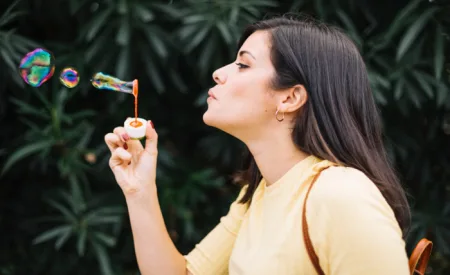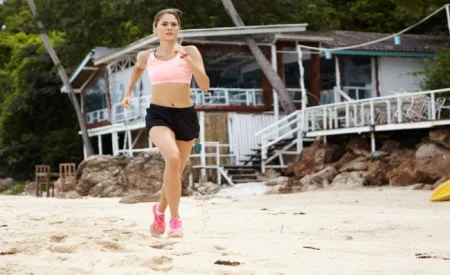Drone photography has experienced a significant surge in popularity in the past few years, offering photographers an entirely fresh approach to capturing awe-inspiring visuals. The opportunity to ascend into the sky with a drone unlocks limitless creative potential and enables the capture of stunning aerial photographs that were previously exclusive to helicopters or airplanes. If you are enthusiastic about delving into this exhilarating realm of photography and aspire to become proficient in capturing captivating aerial imagery, this all-encompassing guide will provide you with the necessary techniques and invaluable tips required to excel in drone photography.
## Understanding Your Equipment
Before you start your drone photography adventure, it is crucial to acquaint yourself with the equipment. Drones come in different forms and sizes, each providing distinct features and functionalities. Dedicate time to carefully go through the user manual, ensuring a comprehensive understanding of all aspects—from fundamental flight controls to camera configurations.
## Pre-flight Preparation
Successful drone photography begins long before takeoff. Proper pre-flight preparation is crucial for ensuring optimal results.
**1. Location Scouting: Research potential shooting locations beforehand by using maps or online resources like Google Earth. Look for visually appealing landscapes that will translate well into aerial images.
**2. Weather Conditions: Keep an eye on weather forecasts as they play a significant role in safe flying conditions and image quality. Avoid flying during heavy rain, strong winds, or low visibility situations that may jeopardize both your safety and photo outcomes.
**3. Battery Management: Always start with fully charged batteries for uninterrupted flights. Carry extra batteries if possible so that you can extend your shoot without interruptions due to power limitations.
**4. Check Legal Requirements: Familiarize yourself with local regulations regarding drones’ operation before taking off—complying with airspace restrictions ensures safe flying while avoiding any legal issues.
## Composition and Framing
When it comes to aerial photography, composition plays a vital role in creating visually striking images. Consider the following tips:
**1. Rule of Thirds: Apply the rule of thirds by dividing your frame into nine equal parts with two horizontal and vertical lines. Position key elements along these lines or at their intersections to create more balanced and visually appealing compositions.
**2. Leading Lines: Utilize natural or man-made leading lines such as roads, rivers, or fences to draw viewers’ attention towards the main subject of your photo.
**3. Symmetry and Patterns: Aerial shots often reveal captivating symmetrical patterns that are not visible from ground level. Look for interesting geometric shapes like crop circles, city grids, or architectural designs to add depth and visual interest to your photographs.
## Mastering Flight Techniques
Capturing stunning drone imagery goes beyond simply hovering in one place; mastering flight techniques greatly enhances your creative possibilities:
**1. Slow and Steady Movements: Smooth movements create cinematic footage that is pleasing to watch. Practice slow panning shots, gentle rotations, and gradual changes in altitude for seamless transitions between different perspectives.
**2. Point-of-Interest (POI) Mode: Many drones offer a POI mode that allows you to set a specific point around which the drone will automatically orbit while capturing footage or photos—all without manual control inputs.
**3. Tracking Moving Subjects: Advanced drones equipped with intelligent tracking systems can autonomously follow moving subjects like cars or people using GPS technology—perfect for action-packed aerial shots.
## Camera Settings for Stunning Imagery
Understanding camera settings is crucial in achieving optimal image quality:
**1. Manual Mode: Switching from automatic modes to manual gives you full control over exposure settings such as aperture, shutter speed, ISO sensitivity—essential when dealing with varied lighting conditions during flights.
**2: Bracketed Exposures: In challenging lighting situations where highlights and shadows may be extreme, using bracketed exposures allows you to capture multiple images at different exposure levels. This technique enables you to merge them later for a well-balanced final image.
**3: RAW Format: Shooting in RAW format preserves more image data compared to JPEG, allowing for greater flexibility during post-processing when adjusting exposure, white balance, or recovering details from shadows and highlights.
## Post-Processing Magic
The magic of drone photography doesn’t stop after capturing the perfect shot; post-processing can elevate your imagery further:
**1. Image Selection: Be selective in choosing your best shots before diving into editing. Focus on unique perspectives, strong compositions, and images that evoke emotions.
**2. Basic Adjustments: Start with basic adjustments like cropping, straightening horizons if needed, adjusting exposure/contrast/saturation levels to enhance overall image quality.
**3. Panorama Stitching: Take advantage of the wide field of view offered by drones by creating stunning panoramic shots from multiple overlapping images using software such as Adobe Lightroom or dedicated panorama stitching applications.
## Safety First
While it’s exciting to explore new heights with drone photography, safety should always remain a top priority:
**1. Fly Responsibly: Always follow local regulations regarding drone usage and respect privacy concerns while flying over public spaces or private properties.
**2: Pre-flight Checklists: Develop a pre-flight checklist that includes battery checks, propeller inspections for damage or obstructions, ensuring firmware/software updates are current—this helps reduce risks associated with mechanical failures during flights.
**3: Maintain Visual Line-of-Sight (VLOS): Keep your drone within visual range at all times while avoiding obstacles and other aircraft in the vicinity to prevent accidents and ensure safe operations.
With these techniques and tips under your belt—as well as practice—you’ll be well on your way to mastering the artistry of drone photography! Embrace this exciting form of visual storytelling and capture stunning aerial images that will leave viewers in awe. Visit here https://www.ruko.net/collections/mini-drones if you are thinking about getting a new mini drone.
Find a huge selection of 4K mini drones for sale at Ruko.net. Remember, always fly responsibly, respect the environment and privacy concerns, and continue to push your creative boundaries. Happy flying!
*Disclaimer: When operating a drone for photography purposes, ensure you comply with local laws and regulations regarding drone usage.*


